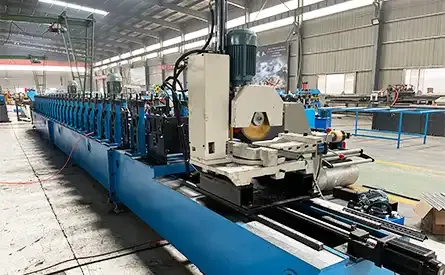pallet warehouse racking
снеж . 28, 2024 12:40
Effective Use of Pallet Warehouse Racking A Comprehensive Guide
In today’s fast-paced logistics environment, efficient storage solutions are essential for optimizing warehouse operations and maximizing space utilization. One of the most common and effective systems used in warehouses is pallet racking. This system allows for the organized storage of products on pallets, providing easy accessibility and better inventory management. This article explores the various aspects of pallet warehouse racking, including its types, benefits, considerations, and best practices for implementation.
Types of Pallet Racking
There are several types of pallet racking systems, each designed to suit different warehouse needs and layouts. The most popular types include
1. Selective Racking This is the most commonly used system. It offers direct access to every pallet stored, making it ideal for warehouses with a wide variety of products and lower turnover rates.
2. Double Deep Racking This type allows two pallets to be stored back-to-back. It increases storage density while maintaining reasonable accessibility, although it may restrict direct access to the second pallet.
3. Drive-In/Drive-Through Racking These systems are designed for high-density storage and are ideal for bulk storage. Forklifts drive into the racking to retrieve pallets, minimizing aisle space but limiting access to pallets located deeper in the racking.
4. Push Back Racking This system uses a series of carts or trays that allow pallets to be pushed back into the racking system. It maximizes space while still providing a good level of access.
5. Mobile Racking This sophisticated and flexible racking system uses mobile bases that can be moved to create aisles as needed, further optimizing space utilization.
Benefits of Pallet Racking
The implementation of pallet racking systems offers numerous advantages
- Maximization of Floor Space Pallet racking allows warehouses to use vertical space effectively, enabling them to store more goods in a smaller footprint.
- Improved Inventory Management With clearer organization and structured layout, inventory tracking becomes more straightforward, reducing loss and improving stock rotation.
- Enhanced Accessibility Various racking systems allow for easy access to products, facilitating quicker picking and replenishment processes.
- Flexibility Many racking systems can be adjusted or expanded as the needs of the business change, allowing for scalability in operations
.pallet warehouse racking

- Safety and Compliance Well-designed racking systems ensure that goods are stored safely, preventing accidents and complying with industry safety standards.
Considerations for Implementation
While pallet racking systems offer substantial benefits, there are critical factors to consider when implementing them
- Warehouse Layout Analyzing the existing layout is crucial to determine which racking system will best fit the operational processes and product flow.
- Load Capacity Each racking system has specific load limits. Understanding the weight and size of products to be stored is vital for selecting the appropriate system.
- Type of Products The nature of goods, whether they are perishable, bulky, or fragile, will influence the choice of racking system.
- Forklift Types Ensuring compatibility between the racking system and the types of forklifts used for loading and unloading is essential for operational efficiency.
Best Practices for Pallet Racking
To maximize the benefits of pallet racking, consider the following best practices
1. Regular Inspections Conduct routine checks to ensure the structural integrity of the racking system and to prevent any potential hazards.
2. Training for Staff Proper training for warehouse staff on how to use the racking system and operate forklifts safely can significantly reduce accidents.
3. Efficient Inventory Management Systems Implementing an effective inventory management system can help track stock levels and enhance order fulfillment processes.
4. Optimize Layout Continuously Regularly assess and reorganize racking systems based on demand patterns and seasonal changes to ensure maximum efficiency.
In conclusion, pallet warehouse racking systems are vital to modern warehousing. By selecting the right type of racking, understanding the benefits, and following best practices, businesses can enhance operational efficiency, improve inventory management, and ensure a safer working environment. As logistics continue to evolve, investing in effective storage solutions like pallet racking will remain a key factor in achieving competitive advantage.









 Unity
Unity Creation
Creation Challenge
Challenge Contribution
Contribution










